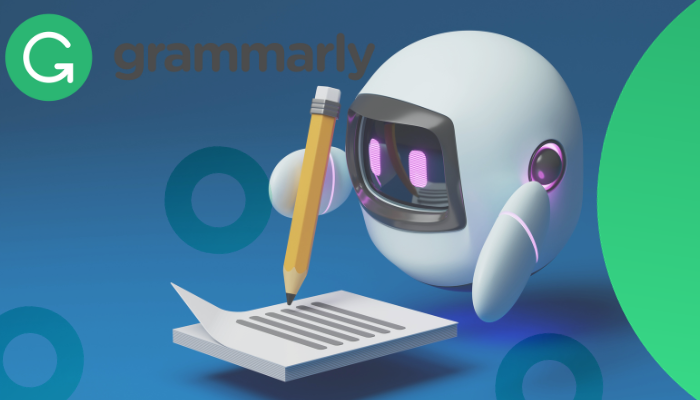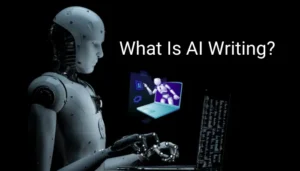In the fast-paced world of digital communication, the need for precise and error-free writing has never been more critical. Enter Grammarly, a popular writing assistant that claims to enhance our grammar and style. But here’s the burning question: Does Grammarly use AI? Is Grammarly considered artificial intelligence? Does Grammarly check for AI? Let’s delve into the intricacies of Grammarly’s technology to find the answers.
Does Grammarly Use AI? A Comprehensive Guide
Grammarly doesn’t just check spelling. It uses smart technology like Natural Language Processing and really smart computer programs to do more than just basic checks. It’s super advanced! Here are some things Grammarly does:

1. Context-Aware Corrections:
- Unlike traditional grammar checkers that may provide generic corrections, Grammarly analyses the context of your writing. This means it understands the nuances of your sentences and offers corrections that align with your intended message.
- For example, if you’re writing a formal business proposal, Grammarly will catch not only spelling mistakes but also suggest language that suits the professional tone required.
2. Style Suggestions:
- Grammarly doesn’t stop at just fixing errors; it assists in refining your writing style. Whether you’re aiming for a more formal tone or a conversational style, Grammarly provides tailored suggestions to enhance your overall writing style.
- Consider a scenario where you’re crafting a blog post. Grammarly might suggest adjustments to make your writing more engaging and in line with the tone suitable for a blog audience.
3. Plagiarism Detection:
- Another noteworthy feature is Grammarly’s ability to detect plagiarism. This goes beyond traditional grammar checkers, adding an extra layer of assurance that your content is not only grammatically sound but also original.
- For instance, if you’re a student working on an academic paper, Grammarly’s plagiarism detection can help you ensure the integrity of your work by identifying any unintentional similarities with existing content.
The Role of Neural Networks In Grammarly
Within Grammarly’s intricate architecture lies the utilization of neural networks, often referred to as the “magic” behind its intelligent suggestions.
1. Human-Like Adaptability:
- Neural networks are complex systems designed to mimic the human brain’s learning processes. In the case of Grammarly, this means the tool can adapt to an extensive array of writing styles.
- Imagine you switch from drafting a formal report to a creative piece of fiction. Grammarly’s neural networks enable it to recognize and adjust to these shifts seamlessly.
2. Continuous Improvement:
- Neural networks play a pivotal role in Grammarly’s continuous improvement. By learning from vast amounts of data generated by user interactions, the tool refines its understanding of language nuances over time.
- As users provide feedback and corrections, Grammarly’s neural networks assimilate this information, contributing to an ever-evolving system that becomes increasingly adept at offering accurate and contextually relevant suggestions.
In essence, when we ask, “Does Grammarly use AI?” The answer lies in the intricate web of features and technologies, such as NLP and neural networks, that work together to make Grammarly more than just a grammar checker—it’s an intelligent writing companion.
Grammarly’s Approach to AI-Powered Suggestions
Grammarly’s use of AI revolves around making your writing better in three key ways:

1. Context-Aware Corrections
Grammarly doesn’t just fix spelling and grammar mistakes; it understands the context of your writing. Whether you’re crafting a formal business email or a casual blog post, Grammarly adjusts its suggestions to suit the tone and style you’re aiming for.
2. Personalised Writing Insights
Imagine having a writing assistant that learns from your habits and preferences. Grammarly does just that. It tailors its suggestions based on your writing history, providing personalised insights to help you grow as a writer.
3. Adapting to Various Writing Styles
From technical documents to creative storytelling, Grammarly adapts to diverse writing genres. This adaptability is a testament to the AI capabilities embedded in Grammarly, making it a versatile AI Writing tool for professionals, students, and casual writers alike.
How Grammarly Checks for AI in Content
Grammarly employs various techniques to ensure your content meets high standards. The first step is:
1. Clarifying Potential Confusion
One common misconception is confusing AI-related content with grammar mistakes. Grammarly is not here to critique your understanding of artificial intelligence; rather, it polishes your writing to convey your ideas clearly, regardless of the topic.
2. Grammarly’s Role in Enhancing AI-Related Content
Grammarly becomes a valuable ally for those delving into the world of artificial intelligence. It ensures that your content, whether discussing machine learning or neural networks, is accurate and well-articulated.
User Experience and Feedback
Different users have different experiences and feedback regarding use of Grammarly. Some of their testimonials and feedback are explained below:
1. User Testimonials on Grammarly’s AI Capabilities
Users worldwide have shared their experiences with Grammarly’s AI, highlighting its impact on various writing scenarios. From seasoned professionals striving for impeccable business communication to diligent students perfecting their essays, Grammarly’s AI-driven suggestions have garnered widespread praise for their accuracy and relevance.
2. Real-Life Examples:
- Consider a business professional aiming to draft a persuasive client email. Grammarly’s AI steps in, offering nuanced suggestions that not only correct grammar but also enhance the overall persuasiveness of the message. The result? A polished and effective communication that leaves a lasting impression.
- Now, imagine a student working on a critical essay for an academic assignment. Grammarly’s AI doesn’t just catch grammatical errors; it provides insights into improving the structure and coherence of the essay, contributing to a higher-quality final submission.
3. Tailoring to Individual Needs:
- What makes Grammarly’s AI particularly noteworthy is its ability to adapt to individual writing styles and goals. Professionals and students alike appreciate the tool’s personalised approach, which goes beyond generic corrections to cater to the user’s specific needs.
- For instance, a marketing professional might find Grammarly invaluable for ensuring a consistent brand voice across various content pieces, while a student could rely on the tool to maintain academic integrity and improve writing skills. Additionally, in the realm of how to use AI at work, individuals exploring applications like chatbot could benefit from understanding the nuances of language to enhance user interactions and streamline communication processes. It’s crucial to recognize both the versatility and specific limitations of AI tools, including Grammarly and chatbots, to harness their full potential in diverse professional contexts.
Critiques and Limitations While using Grammarly
While Grammarly’s AI is undoubtedly powerful, it’s essential to acknowledge that, like any tool, it has its limitations. Some users have reported occasional misinterpretations or instances of overzealous suggestions. When considering how to use AI at work, it’s crucial to understand the strengths and weaknesses of tools like Grammarly to ensure effective communication and accurate language usage in professional settings.
1. Balancing Act:
- Writing is a nuanced and subjective process, and Grammarly’s AI, while highly advanced, may not always capture the subtle nuances of a particular writing style or tone. Users have noted instances where the tool’s suggestions, though well-intended, might not align perfectly with their intended expression.
2. The Tool’s Limits:
- Users must approach Grammarly as a complement to their writing skills rather than a replacement. While AI excels in many areas, the human touch remains irreplaceable in certain creative and context-specific aspects of writing.
- By understanding the tool’s strengths and limitations, users can harness Grammarly’s AI as a valuable ally in the writing process, appreciating its contributions while retaining the autonomy to make subjective decisions about their content.
In essence, user testimonials and critiques provide a human perspective on Grammarly’s AI capabilities, showcasing its real-world impact and encouraging users to embrace the best AI tool as a supportive partner in their writing journey.
Conclusion
In conclusion, does Grammarly use AI? It is undeniable. It is not just a grammar checker but an intelligent writing assistant harnessing the power of artificial intelligence. As the landscape of language tools evolves, Grammarly stands at the forefront, continually improving and adapting to meet the diverse needs of its users.










